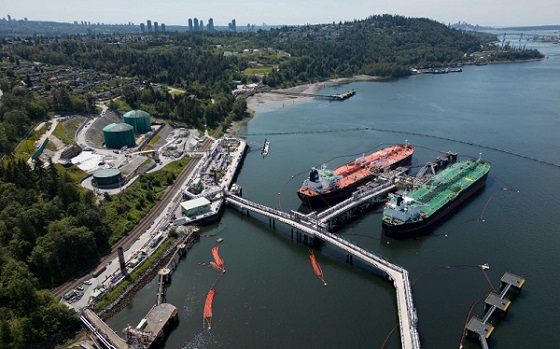Alberta
Alberta Budget 2021 Highlights

Maintaining responsible spending
Budget 2021 is built on 3 fiscal anchors:
- Keep net debt below 30% of GDP to help protect future generations from rising debt servicing costs.
- Deliver services more cost effectively by bringing spending in line with other comparator provinces.
- Re-establish a plan to balance the budget post-pandemic when a more stable level of predictability returns to the budgeting process.
Getting back on track
Operating expense
- In 2021–22, operating expense is $1 billion higher than 2020–21 forecast and begins to normalize, remaining relatively flat over the next 2 years.
Deficit
- $18.2 billion deficit is targeted for 2021–22, $2 billion less than the 2020–21 forecast.
- $11 billion and $8 billion deficits are targeted for 2022–23 and 2023–24 respectively.
Declining deficit can be attributed to decreasing expense as:
- the costs of the pandemic subside
- the government works to streamline and modernize service delivery
- revenue increases as the economy recovers
Budget 2021 funding highlights
Budget 2021 provides funding of:
- $23 billion for health services
- $8.2 billion operating expense for kindergarten to grade 12 (K to 12) education services
- $6.3 to $6.4 billion operating expense for social services ministries
- $136 million over 3 years for the Alberta Jobs Now program
- $166 million over 3 years for the Innovation Employment Grant
- $500 million in 2021–22 for additional investments in economic recovery
Investing in health care
Alberta’s government is increasing Health’s budget by over $900 million (or 4%) to $23 billion, and that’s excluding the impact of COVID-19.
- $5.4 billion for physician compensation and development (including academic medicine)
- $3.5 billion for community care, continuing care and home care programs, including $20 million over 4 years for palliative and end of life care
- $1.9 billion for drugs and supplemental health benefits.
- $34 million for children’s health supports to expand mental health and rehabilitation services for children and youth
- $140 million over 4 years for mental health and addiction services
Continuing the fight against COVID-19
Budget 2021 invests in continued supports to protect Albertans as we enter the second year of the pandemic.
- $1.25 billion COVID-19 Contingency to address health-care costs for responding to the pandemic, including surgical wait times and backlogs
- This is in addition to $2.1 billion spend in 2020-21
Getting health care back on track
Budget 2021 invests $16 billion for Alberta Health Services operations. Includes:
- Alberta Surgical Initiative
- Continuing Care Capacity Plan
- CT and MRI Access Initiative
Investing in health care capital
Budget 2021 commits $3.4 billion over 3 years for health related capital projects and programs, providing:
- $2.2 billion for health facilities, with $143 million for 5 new projects
- $766 million for Alberta Health Services self-financed capital, for parkades, equipment and other capital requirements
- $343 million for capital maintenance and renewal of existing facilities
- $90 million for health department IT projects
Preparing for recovery
Alberta’s Recovery Plan is a bold strategy to create jobs that get people back to work, build infrastructure and diversify our economy. This includes the acceleration of the Job Creation Tax Cut, which creates employment opportunities by making Alberta one of the most attractive jurisdictions in North America for new business investment. Budget 2021 will spend an additional $3.1 billion in 2021–22 to continue supporting recovery plan strategies.
Budget 2021 invests $1.7 billion more in capital funding in 2021–22 than what was planned in Budget 2020.
The 3-year Capital Plan now totals $20.7 billion and will support more than 50,000 direct and 40,000 indirect jobs through to 2024.
Diversifying the economy
In 2021–24, $1.5 billion invested in Alberta’s Recovery Plan.
Budget 2021 invests in established and emerging sectors that hold the greatest potential for growth and job creation, and are fundamental to our economic recovery including: energy; agriculture and forestry; tourism; finance and fintech; aviation, aerospace and logistics; and technology and innovation.
Economic recovery spending highlights
-
- Innovation Employment Grant supports small and medium-sized businesses that invest in research and development
- Developing framework to protect intellectual property in Alberta
- Investment and Growth Strategy supports emerging sectors while building on our existing strengths
- Invest Alberta provides supports and services to drive up investment and showcase Alberta as the best place in the world to do business
Alberta
Alberta bill would protect freedom of expression for doctors, nurses, other professionals

From LifeSiteNews
‘Peterson’s law,’ named for Canadian psychologist Jordan Peterson, was introduced by Alberta Premier Danielle Smith.
Alberta’s Conservative government introduced a new law that will set “clear expectations” for professional regulatory bodies to respect freedom of speech on social media and online for doctors, nurses, engineers, and other professionals.
The new law, named “Peterson’s law” after Canadian psychologist Jordan Peterson, who was canceled by his regulatory body, was introduced Thursday by Alberta Premier Danielle Smith.
“Professionals should never fear losing their license or career because of a social media post, an interview, or a personal opinion expressed on their own time,” Smith said in a press release sent to media and LifeSiteNews.
“Alberta’s government is restoring fairness and neutrality so regulators focus on competence and ethics, not policing beliefs. Every Albertan has the right to speak freely without ideological enforcement or intimidation, and this legislation makes that protection real.”
The law, known as Bill 13, the Regulated Professions Neutrality Act, will “set clear expectations for professional regulatory bodies to ensure professionals’ right to free expression is protected.”
According to the government, the new law will “Limit professional regulatory bodies from disciplining professionals for expressive off-duty conduct, except in specific circumstances such as threats of physical violence or a criminal conviction.”
It will also restrict mandatory training “unrelated to competence or ethics, such as diversity, equity, and inclusion training.”
Bill 13, once it becomes law, which is all but guaranteed as Smith’s United Conservative Party (UCP) holds a majority, will also “create principles of neutrality that prohibit professional regulatory bodies from assigning value, blame or different treatment to individuals based on personally held views or political beliefs.”
As reported by LifeSiteNews, Peterson has been embattled with the College of Psychologists of Ontario (CPO) after it mandated he undergo social media “training” to keep his license following posts he made on X, formerly Twitter, criticizing Trudeau and LGBT activists.
He recently noted how the CPO offered him a deal to “be bought,” in which the legal fees owed to them after losing his court challenge could be waived but only if he agreed to quit his job as a psychologist.
Early this year, LifeSiteNews reported that the CPO had selected Peterson’s “re-education coach” for having publicly opposed the LGBT agenda.
The Alberta government directly referenced Peterson’s (who is from Alberta originally) plight with the CPO, noting “the disciplinary proceedings against Dr. Jordan Peterson by the College of Psychologists of Ontario, demonstrate how regulatory bodies can extend their reach into personal expression rather than professional competence.”
“Similar cases involving nurses, engineers and other professionals revealed a growing pattern: individuals facing investigations, penalties or compulsory ideological training for off-duty expressive conduct. These incidents became a catalyst, confirming the need for clear legislative boundaries that protect free expression while preserving professional standards.”
Alberta Minister of Justice and Attorney General Mickey Amery said regarding Bill 13 that the new law makes that protection of professionals “real and holds professional regulatory bodies to a clear standard.”
Last year, Peterson formally announced his departure from Canada in favor of moving to the United States, saying his birth nation has become a “totalitarian hell hole.”
Alberta
‘Weird and wonderful’ wells are boosting oil production in Alberta and Saskatchewan

From the Canadian Energy Centre
Multilateral designs lift more energy with a smaller environmental footprint
A “weird and wonderful” drilling innovation in Alberta is helping producers tap more oil and gas at lower cost and with less environmental impact.
With names like fishbone, fan, comb-over and stingray, “multilateral” wells turn a single wellbore from the surface into multiple horizontal legs underground.
“They do look spectacular, and they are making quite a bit of money for small companies, so there’s a lot of interest from investors,” said Calin Dragoie, vice-president of geoscience with Calgary-based Chinook Consulting Services.
Dragoie, who has extensively studied the use of multilateral wells, said the technology takes horizontal drilling — which itself revolutionized oil and gas production — to the next level.
“It’s something that was not invented in Canada, but was perfected here. And it’s something that I think in the next few years will be exported as a technology to other parts of the world,” he said.
Dragoie’s research found that in 2015 less than 10 per cent of metres drilled in Western Canada came from multilateral wells. By last year, that share had climbed to nearly 60 per cent.
Royalty incentives in Alberta have accelerated the trend, and Saskatchewan has introduced similar policy.
Multilaterals first emerged alongside horizontal drilling in the late 1990s and early 2000s, Dragoie said. But today’s multilaterals are longer, more complex and more productive.
The main play is in Alberta’s Marten Hills region, where producers are using multilaterals to produce shallow heavy oil.
Today’s average multilateral has about 7.5 horizontal legs from a single surface location, up from four or six just a few years ago, Dragoie said.
One record-setting well in Alberta drilled by Tamarack Valley Energy in 2023 features 11 legs stretching two miles each, for a total subsurface reach of 33 kilometres — the longest well in Canada.
By accessing large volumes of oil and gas from a single surface pad, multilaterals reduce land impact by a factor of five to ten compared to conventional wells, he said.
The designs save money by skipping casing strings and cement in each leg, and production is amplified as a result of increased reservoir contact.
Here are examples of multilateral well design. Images courtesy Chinook Consulting Services.
Parallel
Fishbone
Fan
Waffle
Stingray
Frankenwells
-

 Health2 days ago
Health2 days agoCDC’s Autism Reversal: Inside the Collapse of a 25‑Year Public Health Narrative
-

 Crime2 days ago
Crime2 days agoCocaine, Manhunts, and Murder: Canadian Cartel Kingpin Prosecuted In US
-

 Daily Caller2 days ago
Daily Caller2 days agoBREAKING: Globalist Climate Conference Bursts Into Flames
-

 Health2 days ago
Health2 days agoBREAKING: CDC quietly rewrites its vaccine–autism guidance
-

 Great Reset1 day ago
Great Reset1 day agoEXCLUSIVE: The Nova Scotia RCMP Veterans’ Association IS TARGETING VETERANS with Euthanasia
-

 Business13 hours ago
Business13 hours agoNew airline compensation rules could threaten regional travel and push up ticket prices
-

 Energy2 days ago
Energy2 days agoHere’s what they don’t tell you about BC’s tanker ban
-

 Bruce Dowbiggin2 days ago
Bruce Dowbiggin2 days agoBurying Poilievre Is Job One In Carney’s Ottawa
















